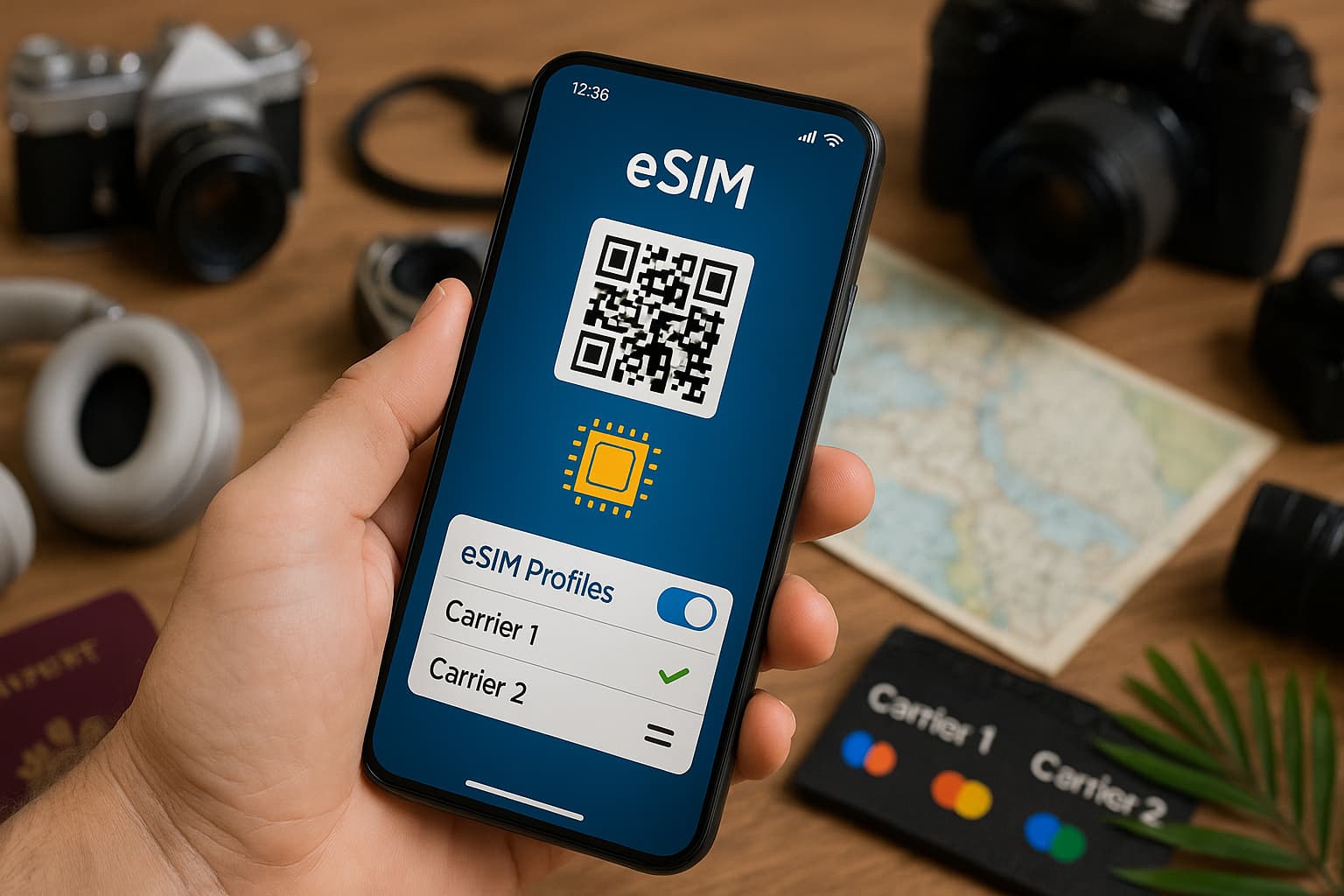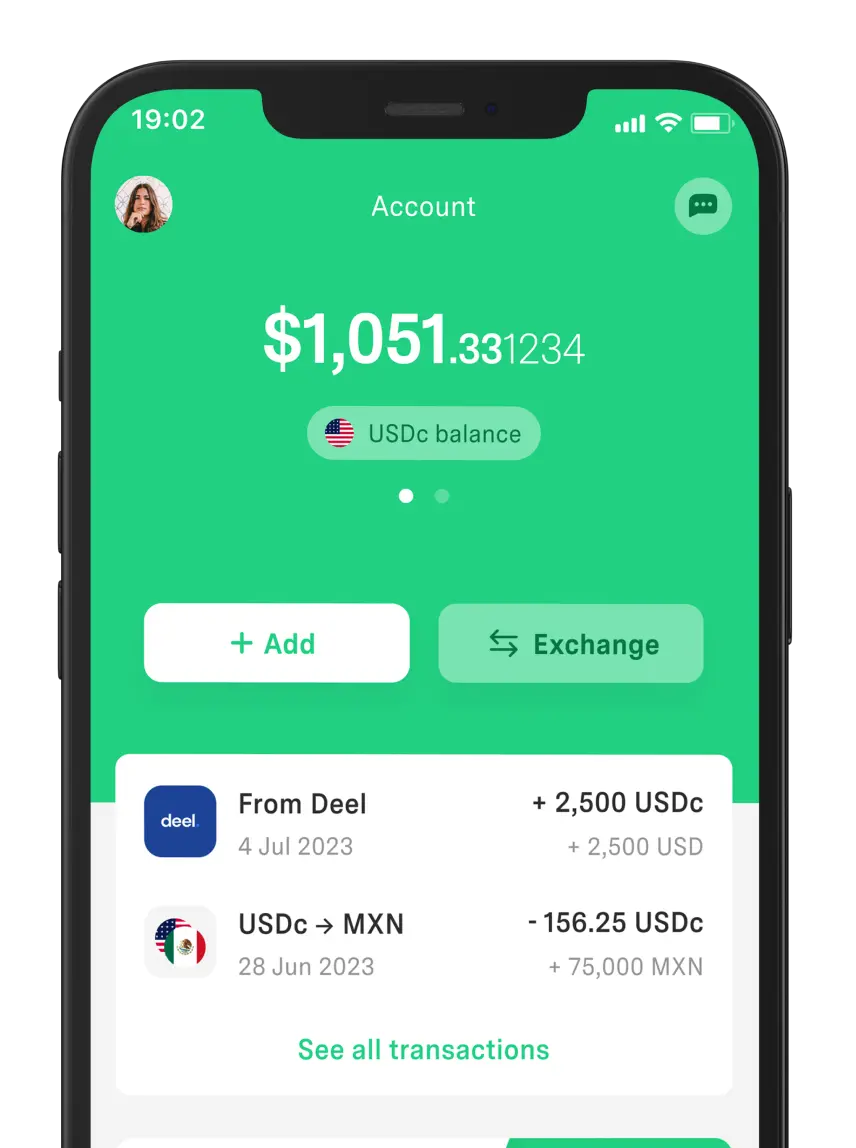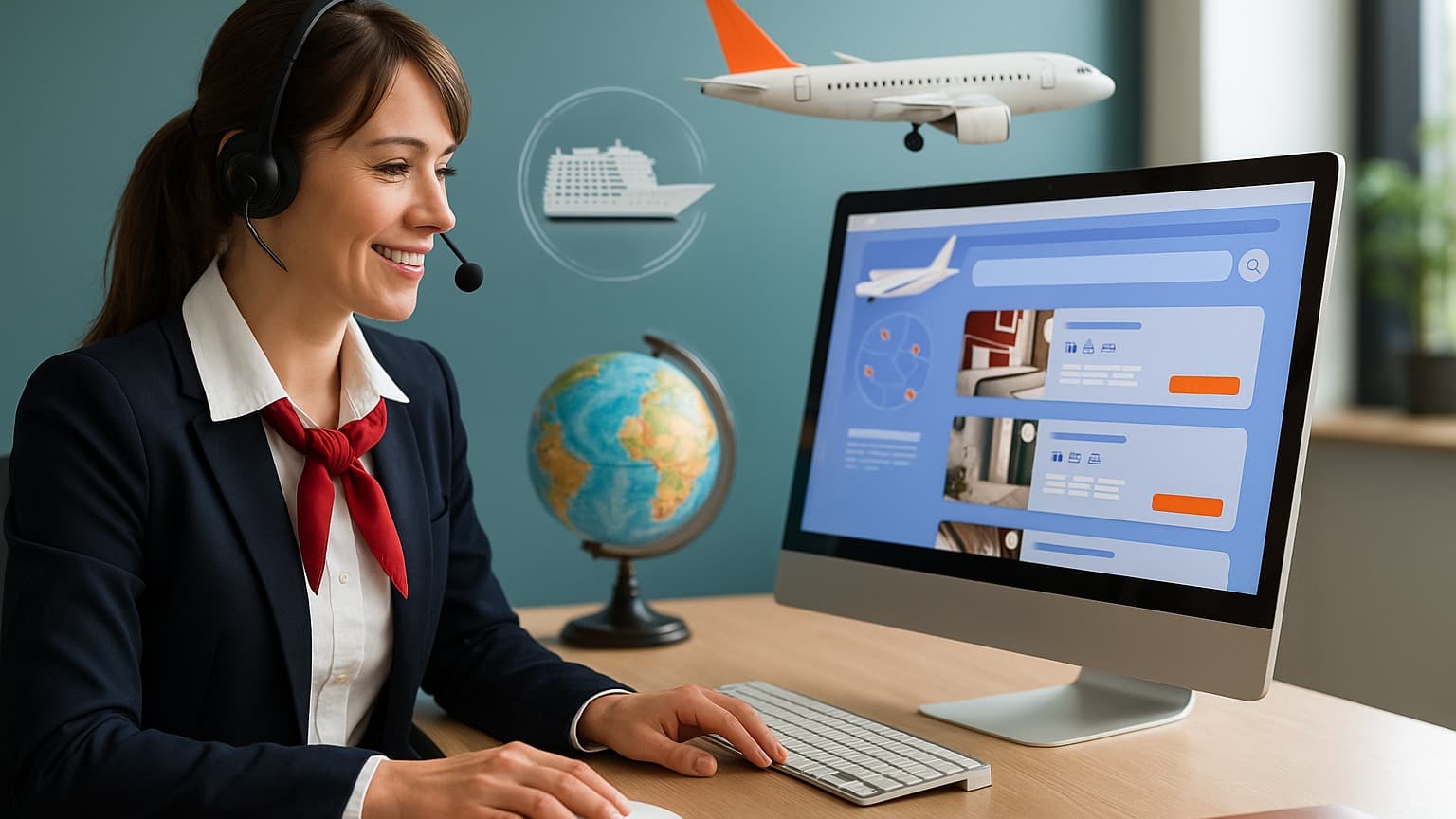 Work and Travel
Work and Travel Expedia: Is it safe to book here? Pros, cons, and user reviews
With Expedia you can search, compare, and book accommodations, plane tickets, and more. Here we tell you the advantages and disadvantages of Expedia.



The eSIM is an evolution of the traditional SIM card. It’s a virtual SIM that’s already embedded in your mobile device. In other words, you no longer need a physical card to connect to mobile networks.
All you have to do is install a profile from an app or scan a QR code and that’s it—you’ve got an active line. There’s no need to visit a store or swap chips.
Most recent phones include this technology, which is perfect for travelers and digital nomads. With it, you can purchase international data services and plans from anywhere in just a few minutes.
If you want to learn more about what an eSIM is, how it works, and the best options to use it, keep reading.
An eSIM is a virtual version of a physical SIM card. That is, you don’t need to insert it into the device because it’s already integrated into the phone as part of the motherboard and you can’t see it.
And how does an eSIM work? How do you activate an eSIM? Very easily:
Scan a QR code or download the eSIM from your carrier's app.
Activate your network profile in seconds. With some plans, you can get the eSIM for free.
Get a data plan in over 160 countries without having to change your SIM card at every border.
Manage multiple lines from the same device to separate your personal and professional life.
That's how simple an eSIM works, making it easy to connect almost anywhere in the world.
How is an eSIM different from a traditional SIM? Which is better? To answer that, check the comparison below and decide for yourself:
Feature | eSIM | Traditional SIM |
Form factor | Virtual, embedded in the device. | Removable plastic chip. |
Activation | Via carrier app or by scanning a QR code. | By inserting the chip into the phone’s SIM tray. |
Switching carriers | From the phone’s settings. | You need to visit a store and replace the card. |
Space used | Takes up no physical space in the phone. | Requires a dedicated slot for the chip. |
Use for travelers | Buy and activate international plans in seconds. | Buy a local SIM at your destination. |
Activation speed | 1–2 minutes and 100% digital. | Can take up to 5 minutes and you do it manually. |
Number of profiles | Can store multiple profiles. | Only one at a time. |
If you’re a frequent traveler or digital nomad, the eSIM is a more convenient and flexible alternative for you.
Advantages of eSIM include:
No physical chip needed. You don’t handle a physical SIM card, which saves time and avoids losing it.
Easy to activate. Just scan a QR code or activate it from your carrier’s app.
Perfect for travelers. No need to buy cards in every destination—just activate an international plan and you’re set.
More secure. Since it’s embedded in the device, you can’t lose it and put your contacts at risk.
Affordable plans. eSIMs often offer plans cheaper than your carrier’s international add-ons or buying a physical SIM at your destination.
Of course, not everything is an advantage with eSIMs—keep these drawbacks in mind:
Not compatible with all phones. It’s only available on recent devices; for example, on Apple you need an iPhone XR or newer.
Carrier dependency. If your device supports eSIM but your carrier doesn’t, you’ll need to switch providers.
The advantages of eSIM outweigh the drawbacks, and it’s a technology that’s replacing the traditional model. As a result, the cons will fade. Plus, a tip for freelancers: look for phones with eSIM—especially if you like to work while traveling.
Unlike postpaid eSIMs, prepaid eSIMs let you pay only for the time or data you actually need. This setup is perfect for frequent travelers, freelancers, and digital nomads because it offers immediate, hassle-free connectivity.
If you’re looking for prepaid eSIM options, here are three of the most commonly used today:
Holafly. Plans available for 160+ countries; one of the most popular among frequent travelers because it offers unlimited data in most destinations.
Saily. Stands out for security and affordable plans—developed by the same team behind NordVPN.
Telcel. This Mexico prepaid eSIM not only offers nationwide coverage, it also lets you add international data plans.
When should you choose a prepaid eSIM? When you’re taking short trips abroad or visiting multiple countries on vacation.
Just like apps for traveling around the world, having a Europe eSIM is essential when you visit the Old Continent. This technology lets you connect the moment you land, without relying on Wi-Fi or hunting down a shop for a local SIM.
With a Europe eSIM you can use a single plan across several European countries without changing numbers or paying extra fees. Which operators can you use? Take a look at this table:
Provider | Coverage | Known for | Estimated price |
Holafly | 30+ European countries | Unlimited data, instant activation, and 24/7 support in Spanish. | From €19 for 5 days |
Orange Holiday | 30 countries | Includes data, minutes, and SMS; you can share across devices (hotspot). | From €39.99 for 14 days |
Vodafone | European Union | Flexible plans and free roaming within the EEA. | From €15 for 10 GB |
And if you’re wondering whether a European eSIM is better than international roaming… The answer is yes. With an eSIM you won’t be hit with high data charges, and you can switch plans or providers whenever you like.
It’s like the freedom you have when buying in the USA and receiving in Mexico—meaning you don’t have to adapt to your local provider’s offer. Ideal if you’re a freelancer or frequent traveler.
When you hear or read “free eSIM,” it can be confusing—you might think it includes a free data plan.
However, that’s not the case. What some carriers offer at no cost is the activation or download of the digital chip. To use phone or data service, you’ll always need an associated plan.
In other words, the free part is usually the eSIM profile, not the connectivity. Just like with a physical SIM, you must purchase a data or minutes package to use it.
In Mexico, carriers like Telcel, Movistar, and AT&T offer free eSIM activation. However, to use data, talk, and text, you must pay for a plan.
The same happens with global providers like Vodafone or T-Mobile, where the virtual card is free but the plan is paid.
eSIMs are compatible with many phones:
iPhone
Samsung
Xiaomi
Huawei
Google Pixel
OPPO
Motorola
VIVO
HONOR
And many more.
To check if your phone is compatible with an eSIM, verify it manually.
On Android devices, follow these steps:
Open the Phone app and dial *#06#.
In the info that appears, check for the EID code.
You can also go to Settings → Connections and tap SIM Manager.
If you see Add eSIM, your phone is compatible.
If you have an iPhone, do this:
Go to Settings → General → About.
Scroll to the Carrier Lock section.
If it shows No SIM restrictions, then your iPhone is compatible with eSIM.
Another way is Settings → Mobile Data and check that Add eSIM appears.
If you’re traveling soon, make sure your device supports eSIM so you can enjoy greater flexibility and better data packages.
eSIM offers many advantages—from simple activation, security, and flexible plans to cheaper costs on international data. It’s ideal for frequent travelers, digital nomads, and people working remotely.
Many carriers now offer eSIM, but not all have global data bundles. However, there are options like Holafly with plans usable in 160+ countries. Unlike conventional roaming, the cost is more accessible and offers greater flexibility.
In short, eSIM simplifies your connection—just as DolarApp simplifies your finances with more security, flexibility, and without borders.
The main difference is that a SIM is a physical card, while an eSIM is virtual and embedded in the device. Plus, with an eSIM you can store multiple profiles, whereas a conventional SIM only lets you use one at a time.
For initial setup you do need internet; after configuring your profile, you can use it without Wi-Fi. When you create your profile, you connect to the carrier’s network and can use mobile data to browse, make calls, etc.
Yes. You can use one conventional SIM and one eSIM, or two eSIMs if your device supports it. That way you can separate your work line from your personal number—or keep one for travel and another for your home country.
To activate a prepaid eSIM, purchase a digital plan, scan the QR code your carrier sends, and follow your phone’s instructions. In seconds you’ll have service—no card insertion or paper contract required.
Sources:
Use an eSIM when you travel – AppleHow do I check if my device has eSIM? – +Móvil Panama

The world has borders. Your finances don’t have to.
 Work and Travel
Work and Travel With Expedia you can search, compare, and book accommodations, plane tickets, and more. Here we tell you the advantages and disadvantages of Expedia.

 Work and Travel
Work and Travel Expedia TAAP Mexico could be the competitive advantage your agency is looking for. Discover how to register and how you can boost your income.

 Work and Travel
Work and Travel Build your own kit with the best travel apps to plan, book, and manage every trip detail from your phone.


